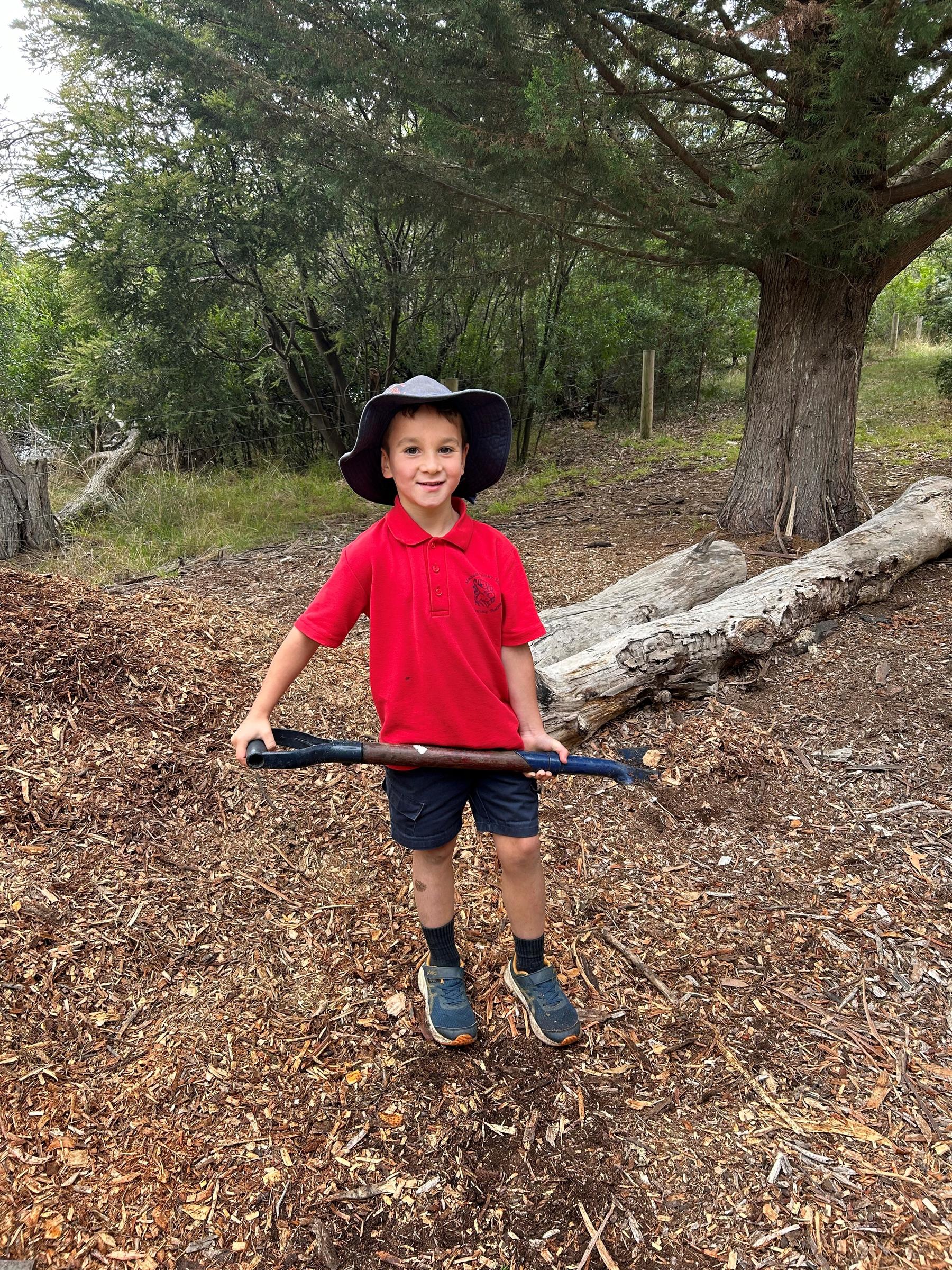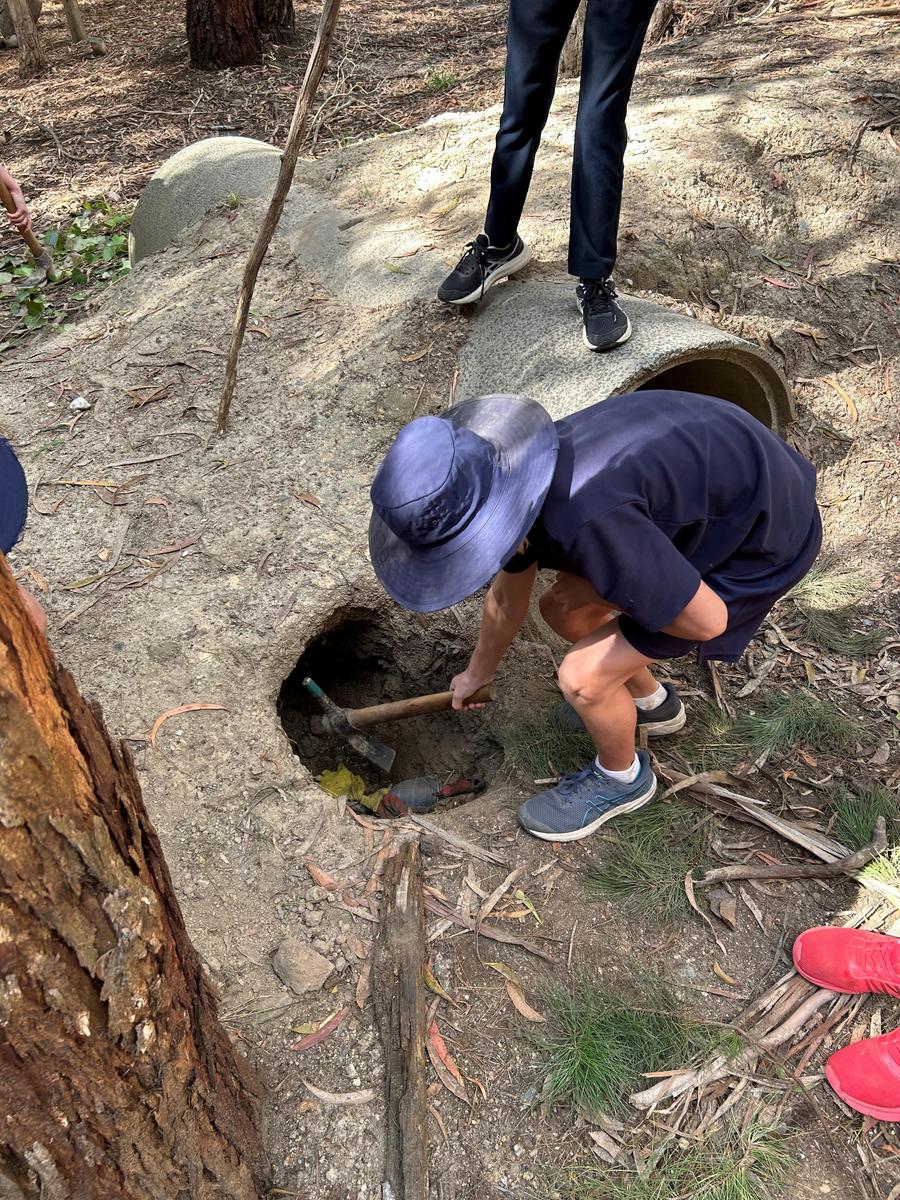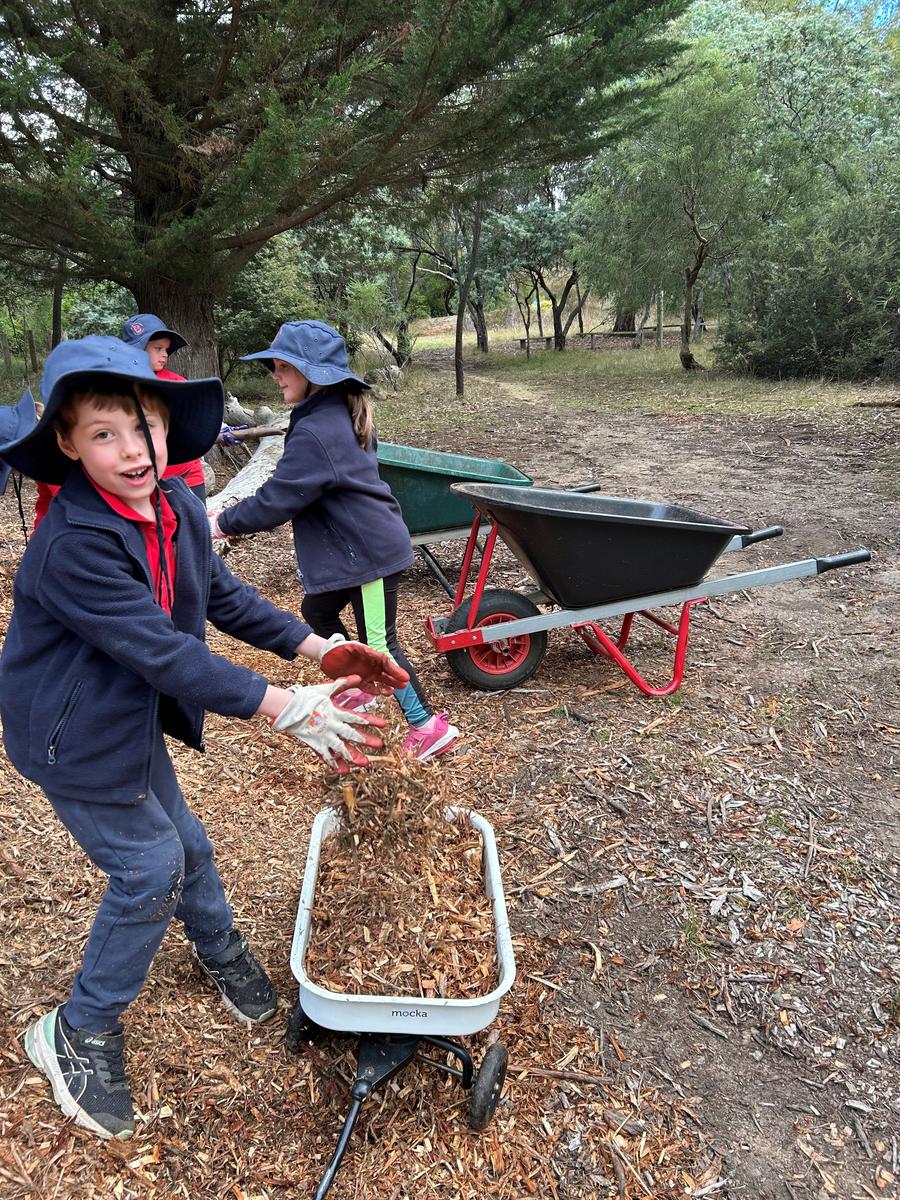Forest School

What a fabulous start to term two we’ve had in the past week and a half of the Forest School program. Someone said to me recently, “Why is it called ‘Forest School’ when we call it bush in Australia?”. That’s a fair enough question. We call it “Forest School” because Macedon Primary sits firmly in The Black Forest that surrounds us, all way from Woodend and up onto beautiful Geboor (the Indigenous name for Mount Macedon).
We also call it “Forest School” because our very unique program originates, at least in part, from the very innovative and carefully crafted play-based learning programs in the United Kingdom, also termed “Forest School”. When you have time, Google ‘Forest School UK’ and prepare to be impressed! Lastly, as several of our senior students mentioned recently, we call it “Forest School” as a grateful nod to our much loved previous Principal Mr. Forest, who had a vision to help our wonderful students learn and play through Scientific exploration and discovery in our very unique and beautiful Middle Gully Reserve.
This past week and a half in Forest School we have had such a fun time learning about the Indigenous seasonal calendar. Our little area was something of a junction for several Indigenous language groups, so we will refer to a number of them regularly. The Dja Dja Wurrung people observed a six-season calendar which was based largely on available food at varying times of year. We are currently in the Wurrak and Burukil season (The Banksia and Parrot season).
At this time of year, Indigenous people used the early flowering Banksia blooms by soaking them in water and drinking the water to extract the energy-giving nectar. They also observed the arrival of the Swift Parrot from Tasmania and the emergence of many different types of fungi. We found quite a lot of fungi around the orchards in Middle Gully and talked about safety and also responsible land management around these important and beautiful little members of the ecosystem. Dja Dja Wurrung people observed an increase in the rains at this time of year and noticed that the trees excreted a larger amount of sap at this time. The Silver Wattle started to sprout its newly formed yellow foliage, slowly getting ready to burst into yellow blooms in Spring and this indicated that the sap from the Silver Wattle was extra sticky and ready to be used either as food or as glue for tool and weapon-making. Some students found some sap on one of our own Silver Wattles. Ask your children all about Wurrak and Burukil season and you’ll find out even more!
Making a rope swing with rope and a sturdy piece of log has been a very popular offering in Forest School. We have been getting busy moving soft-fall bark from the roadside gate up to the rope swing area to improve our safety whilst flying to the moon. Interestingly, the Foundation students were like a swarm of bees, helping with the task…grade six not so much (laughing emoji here).
We have continued to enjoy our beautiful chooks and we are learning more and more about ways to care for them responsibly and with kindness, whilst collecting their beautiful eggs. This week we organised for a regular supply of greens to come to Middle Gully via Woodend IGA for the chooks. Happy chooks indeed.
As part of the program is exploring the soggy old bush, this will often include water and mud play. It would be really great if children, especially in Foundation, grade one and two brought a pair of gumboots in a plastic bag and a change of clothes, mainly socks, underwear and trousers on Forest School days. We have a small number of waterproof overalls and are in the process of adding to that supply, but a change of clothes and gumboots are a great help.
Ginny Tulloch 😊





